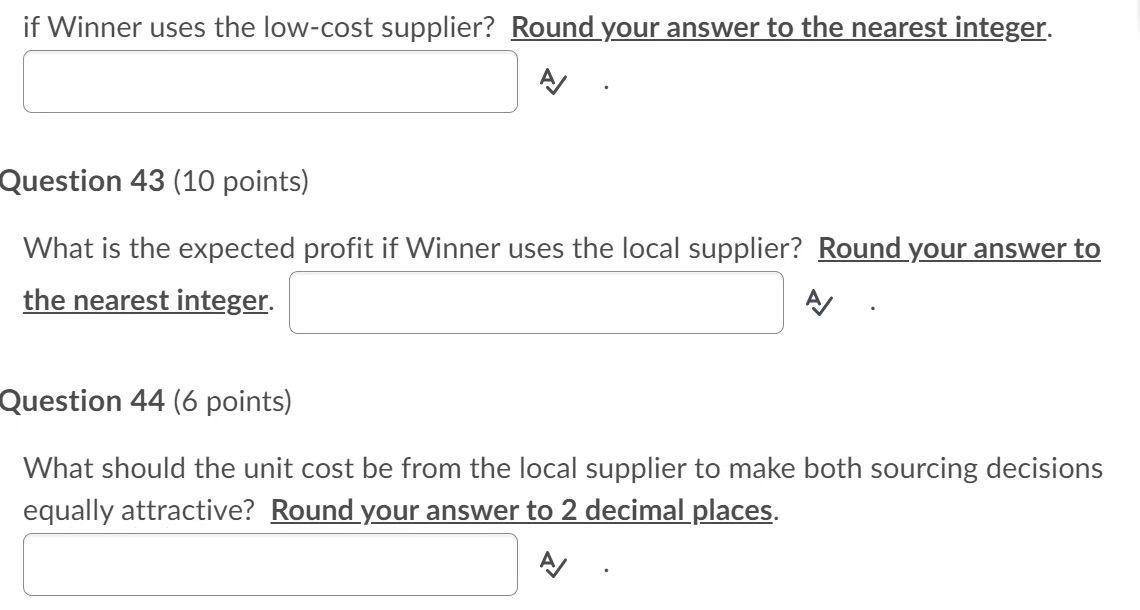

Refer to "The Need for Speed at Winner Apparel" case study at the end of Chapter 13, and only focus on the Trendy product. Each unit is sold at a full price of $100, and any unsold unit at the end of the season would be salvaged at $18. This was a significant loss given that each unit had been purchased for $40 from a remote low- cost supplier. Alternatively, Winner is considering a local supplier who can make two deliveries for the season. The first delivery would arrive before the start of the season and be designed to cover about a half-season of sales. The second delivery would arrive around the middle of the season, but the timing and quantity could be adjusted to account for sales in the first half. For this flexibility, the local supplier wanted a premium of 5% compared to the low-cost supplier. However, the additional benefit of having a second delivery, is that Winner can make a more accurate forecast of demand. It is estimated that the standard deviation of demand in the second half of the season will be 70% of the standard deviation of demand in the first half of the season. Finally, assume the mean demand for the season is 500, and standard deviation of demand for the season is 300. What is the expected profit if Winner uses the low-cost supplier? Round your answer to the nearest integer. if Winner uses the low-cost supplier? Round your answer to the nearest integer. Question 43 (10 points) What is the expected profit if Winner uses the local supplier? Round your answer to the nearest integer. Question 44 (6 points) What should the unit cost be from the local supplier to make both sourcing decisions equally attractive? Round your answer to 2 decimal places. Refer to "The Need for Speed at Winner Apparel" case study at the end of Chapter 13, and only focus on the Trendy product. Each unit is sold at a full price of $100, and any unsold unit at the end of the season would be salvaged at $18. This was a significant loss given that each unit had been purchased for $40 from a remote low- cost supplier. Alternatively, Winner is considering a local supplier who can make two deliveries for the season. The first delivery would arrive before the start of the season and be designed to cover about a half-season of sales. The second delivery would arrive around the middle of the season, but the timing and quantity could be adjusted to account for sales in the first half. For this flexibility, the local supplier wanted a premium of 5% compared to the low-cost supplier. However, the additional benefit of having a second delivery, is that Winner can make a more accurate forecast of demand. It is estimated that the standard deviation of demand in the second half of the season will be 70% of the standard deviation of demand in the first half of the season. Finally, assume the mean demand for the season is 500, and standard deviation of demand for the season is 300. What is the expected profit if Winner uses the low-cost supplier? Round your answer to the nearest integer. if Winner uses the low-cost supplier? Round your answer to the nearest integer. Question 43 (10 points) What is the expected profit if Winner uses the local supplier? Round your answer to the nearest integer. Question 44 (6 points) What should the unit cost be from the local supplier to make both sourcing decisions equally attractive? Round your answer to 2 decimal places








